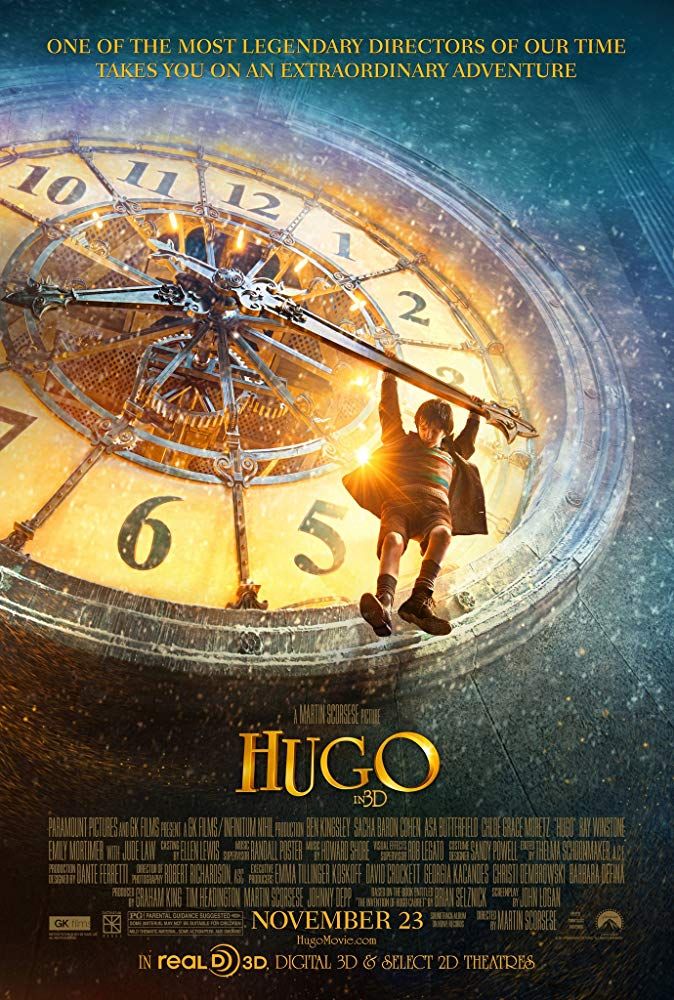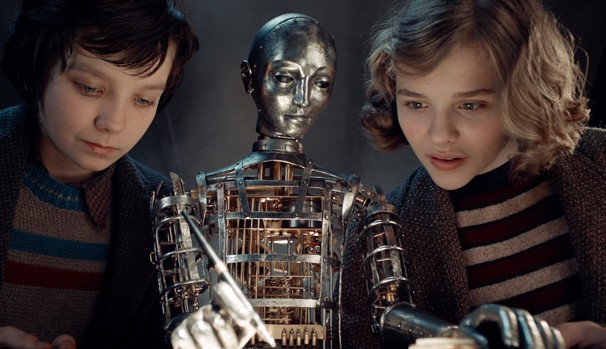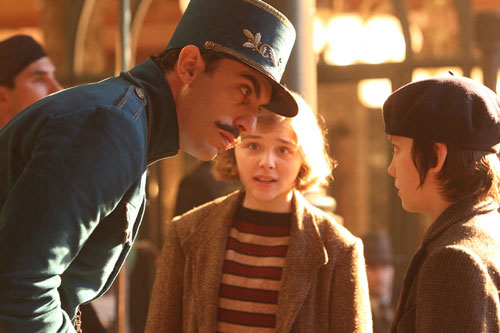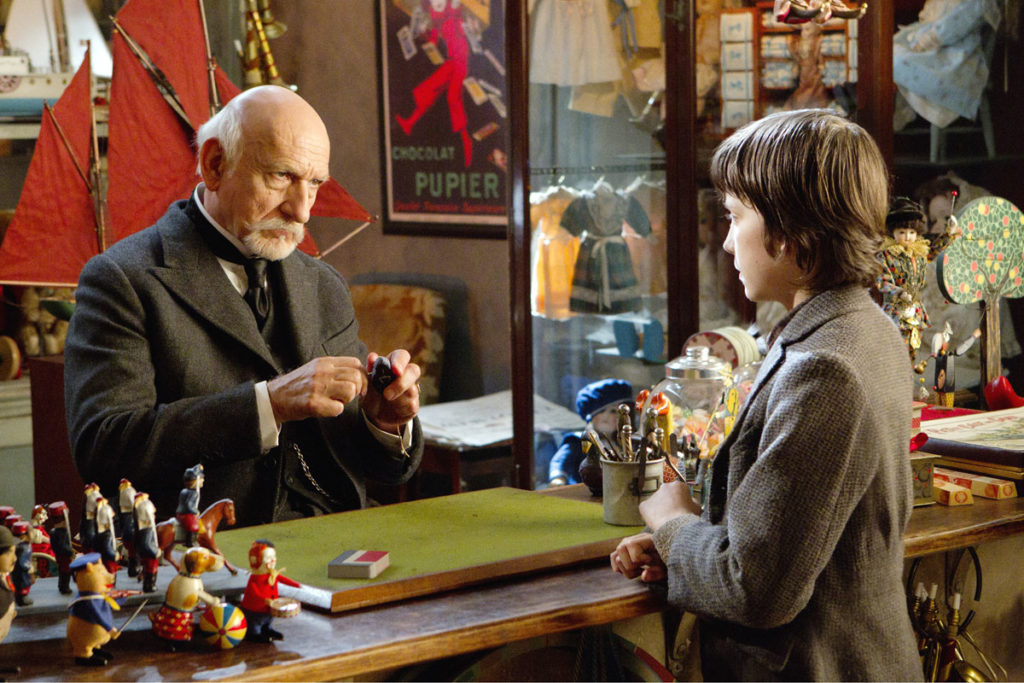Hugo
The man who invented laughter

Unlike “normal” people, I have always had a certain disgust for blockbusters, preferring the obscure titles, which often hide true jewels of the Seventh Art. However, I was forced to remember that we should never generalize, when a very typical Hollywood production touched me a lot, having as theme my great passion, the cinema itself. The film in question is “Hugo” (USA/FRA/UK, 2011) by director Martin Scorsese.
The synopsis did not inform much and the trailer of the movie seemed to deal more with fantasy involving an orphan boy and an automaton. Thus, it was a certain surprise to discover that the main theme of the film was the man who gave the cinema its function of entertainment, as we know it today.
The story of the film is shown through the optics of Hugo Cabret (Asa Butterfield), a young orphan, son of a dedicated watchmaker (Jude Law), killed in an explosion in a museum. Hugo is sheltered by his uncle, Claude (Ray Winstone), who lived permanently drunk and had as a job to take care of all the clocks of a railway station. Hugo was trained by his uncle to replace him in his duties, and in his drinking, one day he simply disappeared from the face of the earth.

Hugo had a secret desire, which was to put into operation an old, semi-destroyed automaton that his father had collected from the trash of a museum. The two devoted hours studying and rebuilding the necessary pieces, until the death of the father left the boy alone.
While stealing food to survive, Hugo also stole the pieces from a trick and toy shop maintained by grumpy Georges (Ben Kingsley). One of these times, Hugo is caught by Georges, who threatens to hand him over to the stern Station Inspector (Sacha Baron Cohen).

Hugo meets Isabelle (Chloë Grace Moretz), who imagines to be Georges’ granddaughter, but discovers that he and his wife are the godparents of the girl who had adopted her when her parents died in an accident.
Isabelle brings with her the missing piece for the automaton to work, a heart-shaped key. But the result of this return to life seems to be something even stranger, as it brings the design of a projectile entering the eye of a stylized moon.

As they seek more information on the subject, they discover that Isabelle’s mysterious godfather was none other than the famous Georges Méliès, a film enthusiast in his early days, and who apparently had died during World War I.
There is no doubt that it was the brothers Louis and Auguste Lumière the inventors of cinema, in their conception of continuous photographs, displayed at a speed that passes to the viewer the illusion of moving images. In 1895 the brothers designed “The Departure of the Workers from the Lumière Factory” for the Societé d’Encouragement pour l’Industrie Nationale in March, and on December 28, they organized the first screening of films for a paying audience in Paris.

But not even the Lumière believed that their invention would be more than a passing curiosity. As they were businessmen, even seeing the interest of the public, they devoted themselves more to the coverage of exotic facts and places, in a line that would in the future led to film journalism.
Other people, however, coming from the variety theater, realized a potential for fabulous entertainment. One of these was Georges Méliès, who came from a successful career on stage, even possessing his own theatre, Théatre Robert-Houdin in Paris, who had belonged to the famous Houdin, where he exhibited numerous tricks using fruits of his prodigious skill.

When he attended one of the Lumière brothers’ exhibits, Georges became fascinated by the possibilities it could bring to the entertainment world. When trying to buy one of the Lumière’s camera, had the proposal rejected.
Méliès got as a gift a prototype created by English cinematographer Robert William Paul and was so excited about it that he went out filming the streets of Paris. One day, the camera twig, reworking shortly thereafter. When unveiling the film, the filmmaker saw a car turn into a bus, which enthused Méliès. To this trick he gave the name of stop-action.

Georges was passionate about illusionism, uniting the fantastic to the macabre. One of his first films, “The Man with the Rubber Head” (“L’homme à la tête en caoutchouc”, FRA, 1901), brings the filmmaker as a scientist who inflates his own head to infuse it like a balloon. In “Voyage to the Moon” (” Le voyage dans la lune”, FRA, 1902), shows a spaceship being sent to the Moon and “alluded” in the eye of our satellite, entitled to fights with selenites and a glorious return journey.
Méliès’ films became more and more elaborate, with many special effects, always with transformations and disappearances. The films of the time, which were mute and in black-and-white, gained colors in his productions, with the frames painted by hand, one by one.

Due to his perfectionism, and with the approach of the World War (it was not yet imagined that there would be a second one), George Méliès ended up going bankrupt, and many of his original films ended up being sold as scrap, for the extraction of silver, detail that is shown in the film.
In 1923 he was declared bankrupt, and his beloved theater was demolished. Méliès practically disappeared into obscurity until the late 1920s, when his valuable contribution to cinema was recognized by France. In 1931, he received the award of the Legion of Honor and one villa at château D’Orly, a retreat for artists, of which he would be the first occupant and where he lived the last years of his life.
Georges Méliès died in 1938 after making about five hundred films in total – funding, directing, photographing and starring almost all of them.

Instead of opting for a biopic of Méliès – which would certainly look fantastic – Scorsese opted for a lyrical and fanciful vision, which brought the viewer the essence of which cinema is formed of: imagination.
“Hugo” won the Academy Award in the categories of Cinematography, Sound Mixing, Sound Editing, Visual Effects and Art Direction, in addition to being nominated for Best Motion Picture, Best Direction, Adapted Screenplay, Film Editing, Costume Design and Original Score.

The cast is also perfect, especially Ben Kingsley, who already bears a physical resemblance to the real Georges, and even Sacha Baron-Cohen, who proves to be a good actor when he leaves his eschatological roles, such as “Borat” and “Bruno”.
Although not a children’s film, the free indicative rating allows to watch with the whole family, which is a good opportunity to understand the slogan that for a long time claimed to be cinema the best fun.
An added curiosity are excerpts from the actual films of Méliès, and two other little-known great comedians today, Harold Lloyd and Buster Keaton. For people who always ask where to find, it is available on the Amazon Prime Video platform.





